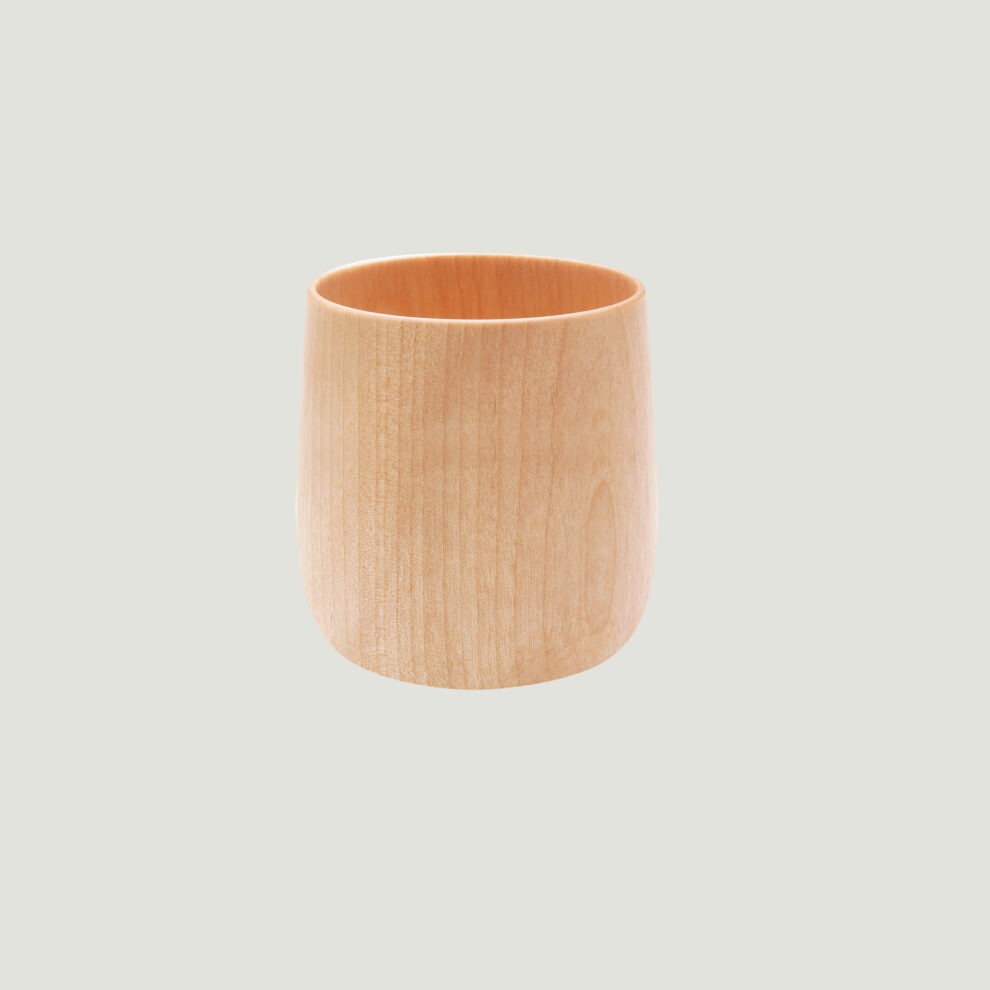YUKI wood
Each cup is meticulously crafted by Yamanaka lacquerware artisans in Ishikawa Prefecture, Japan. It is light, thin, and smooth because it is made with a technique that is highly regarded as the best in Japan.
Shigeichiro Takeuchi, the designer and the creative director of MOHEIM tells the story behind this cup with its soft and elegant form.
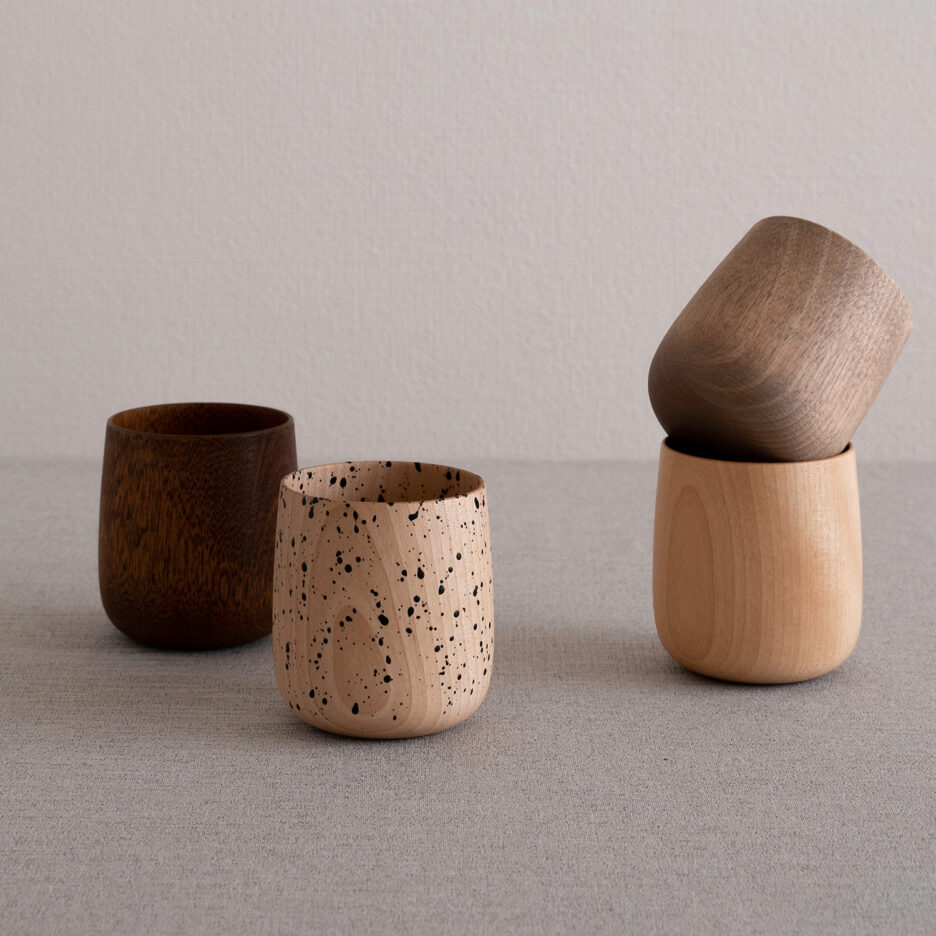
Soft and graceful, an elegant wooden cup
YUKI wood is both beautiful and easy to use.
Each piece is made by Yamanaka Lacquerware’s wood craftsmen, who boast the best woodworking techniques in Japan.
These wooden cups are carved from solid wood and finished to the utmost thinness by artisan craftsmanship. They have a soft form that fits gently in your hand.
Combined with the grain of Japanese Mizume cherry birch wood, each one is a piece that you will want to love forever.
PRODUCT STORY Vol.11
—— MOHEIM items are often named after the items themselves, such as “SWING BIN” or “STONEWARE,” but the name “YUKI” seems unique. Could you first tell us about the origin of the name?
YUKI wood is made by Yamanaka lacquerware craftsmen, who boast the best techniques in Japan, carving each piece out of solid wood. The name “YUKI” comes from the word “snow” in Japanese. The name was inspired by the winter scenery of Yamanaka Onsen in Ishikawa Prefecture, where Yamanaka lacquerware is produced. Soft but strong…, that’s the impression we got from this product and its background.
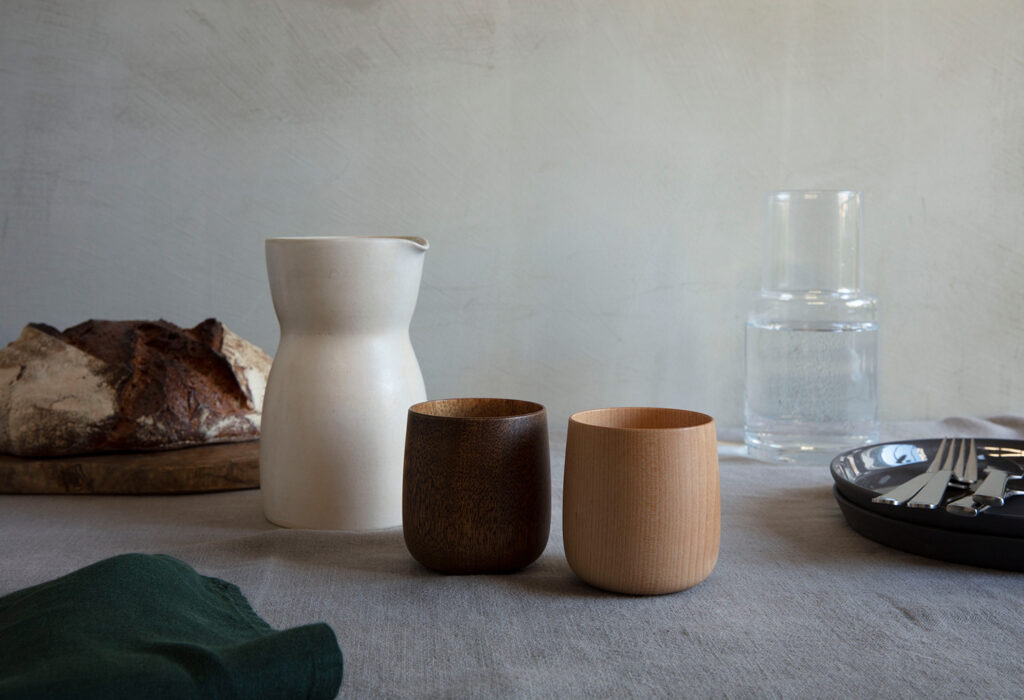
—— How did you come up with the idea of creating YUKI wood in the first place?
It would have been around 2008… There was an exchange and matching event for designers and makers of local industries and traditional crafts in the region. When I attended the event, I met a Yamanaka lacquerware maker and immediately thought, “I want to make something together using this technique.”
—— You say you were impressed by Yamanaka lacquerware techniques. I am very interested in what Yamanaka lacquerware is all about.
Yamanaka lacquerware, produced in the Yamanaka Onsen area of Kaga City, Ishikawa Prefecture, boasts a 450-year history. It is one of the three major lacquerware production areas in Ishikawa Prefecture, which is famous for its lacquerware in the first place. They are known as “Yamanaka of the Wood” along with “Wajima of the Lacquer” and “Kanazawa of the Maki-e.”
—— So the existence of the famous “Yamanaka of the Wood” was the inspiration for the creation of YUKI wood. I would like to know more about this technique.
Yamanaka is where many “kijishi (woodwork masters)” have been active since ancient times in the processing and manufacture of bowls and trays using a rokuro (lathe). There are several lacquerware production areas in Japan, but the most distinctive feature of Yamanaka lacquerware is the “tate-kidori (vertical cut-out)” method. This is a method of taking the shape of a vessel in the direction in which the tree grows. In normal production areas, vessels are made by “yoko-kidori” (horizontal cut-out).
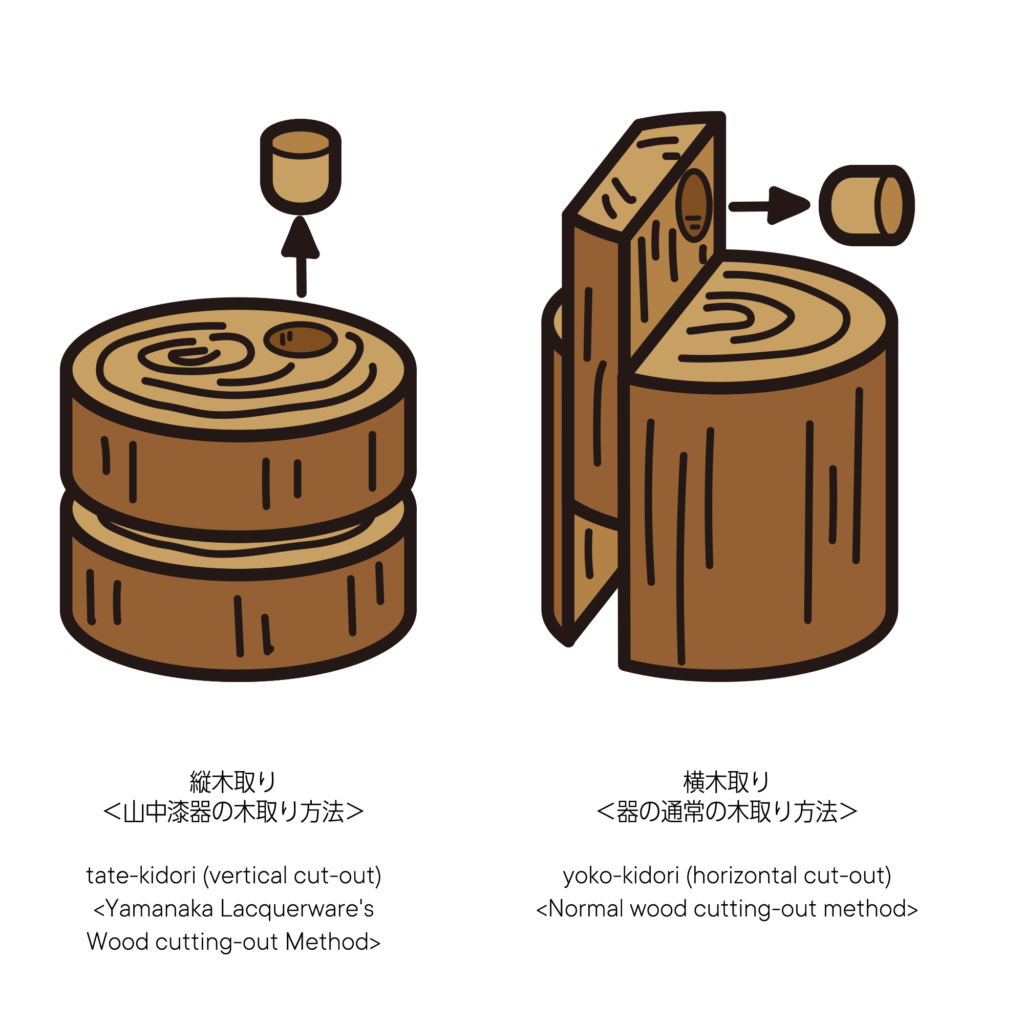
—— Why did they choose the “tate-kidori” method and what are the benefits?
Vessels made with vertical wood-cutting, when placed on a table, are oriented in the same manner as the logs which grow upward, right? The advantage of this is that it is strong and resistant to distortion and shrinkage.
Wood, by its very nature, distorts greatly when it dries. The thinner the wood is, the more vulnerable it is to distortion. In anticipation of this, the vessels are made using the “tate-kidori” method. After the vertical cutting process, Yamanaka lacquerware undergoes a drying process that takes three to five years (much longer than usual), and is then finished by skilled craftsmen. But these processes are not only reasons Yamanaka produces good lacquerware.
—— I would like to hear more about the craftsmanship of the woodworkers in Yamanaka.
It is said that Yamanaka’s craftsmen have the best skills in Japan. In other words, it is no exaggeration to say that their skills are the best in the world. One of their greatness is the “thinness” of the finished product. The thinness is created using a technique called “thin carving,” which Yamanaka’s wood craftsmen specialize in.
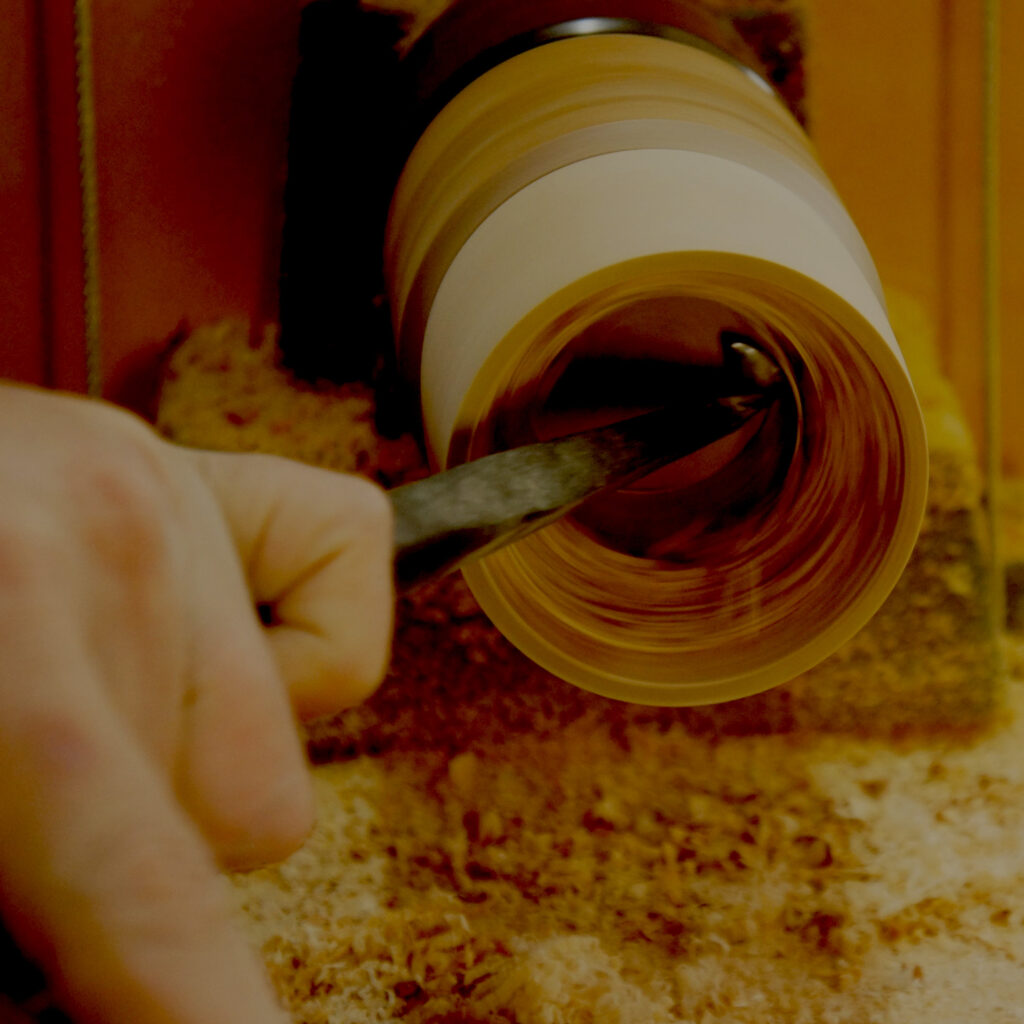
As you can see from the photos, the thickness of the rim of YUKI wood is really thin. But what is more amazing is that Yamanaka lacquerware craftsmen are able to complete a product that is both thin and smooth. This requires a very high technical skill. If the technique is not good enough, the piece will inevitably crack or develop holes, and there are really only a limited number of wood craftsmen who can make it thin and smooth.
Incidentally, “thin carving” also requires the skillful technique of “reading the grain of the wood.” When a craftsman who can accurately read the grain of the wood performs the lathing, the product will be finished with less distortion and a more beautiful grain.
—— The ultimate in craftsmanship….
Yes, it is. The woodworkers who cut and carve the wood uses a variety of knives to lathe a single product. They also customize the blades by themselves. For example, by hitting and forging, thinning the blade edge, and so on.

YUKI wood was born out of a desire to express the “light and thin, as well as smooth and beautiful” cup made possible by this craftsmanship in my own design.
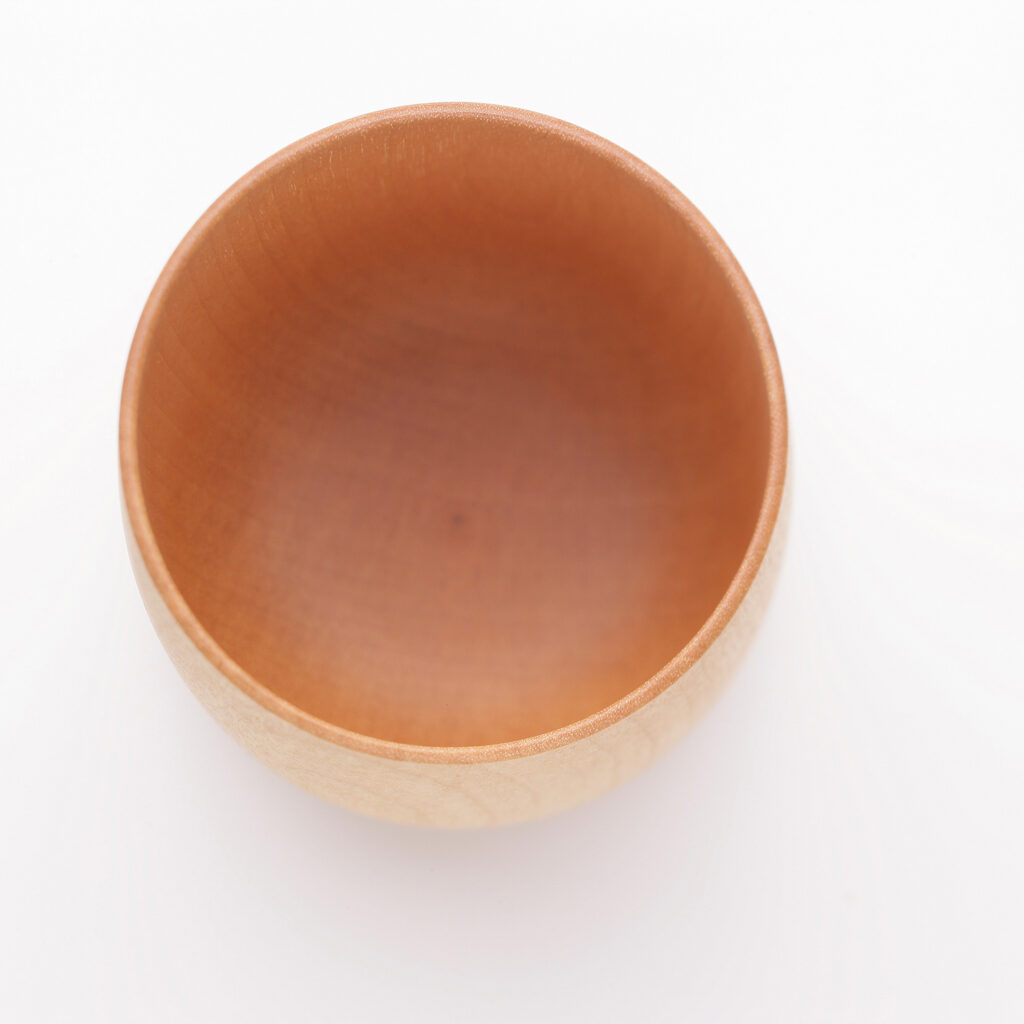
—— I think this thinness is truly outstanding. It is light, and it feels amazingly comfortable in the hand.
As you can see, I have designed it to have “no straight lines.” Of course, there is a straight line on the bottom, but you may not perceive any straight lines from the appearance. And in a good sense, the “subtle loose curves” create a form that easily fits in your hand. Incidentally, to arrive at this shape, we made many adjustments, millimeter by millimeter, over and over again. We went through many prototypes without making any compromises so that it would fit comfortably in your hand when you hold it.
And we are particular about the species of wood used. We use Japanese Mizume cherry birch wood, which has a deep and elegant grain. The grain of the wood gives each piece a different look.

—— I am also interested in the wide variety of colors.
Originally, there were two color schemes: natural, which utilized the texture of the Japanese Mizume cherry birch wood itself, and brown, which highlighted the beauty of the lacquer.
We wanted to add not only the orthodox natural and brown colors, but also colors with a slightly new touch. And in 2022, we added two new colors, greige and natural shibuki.
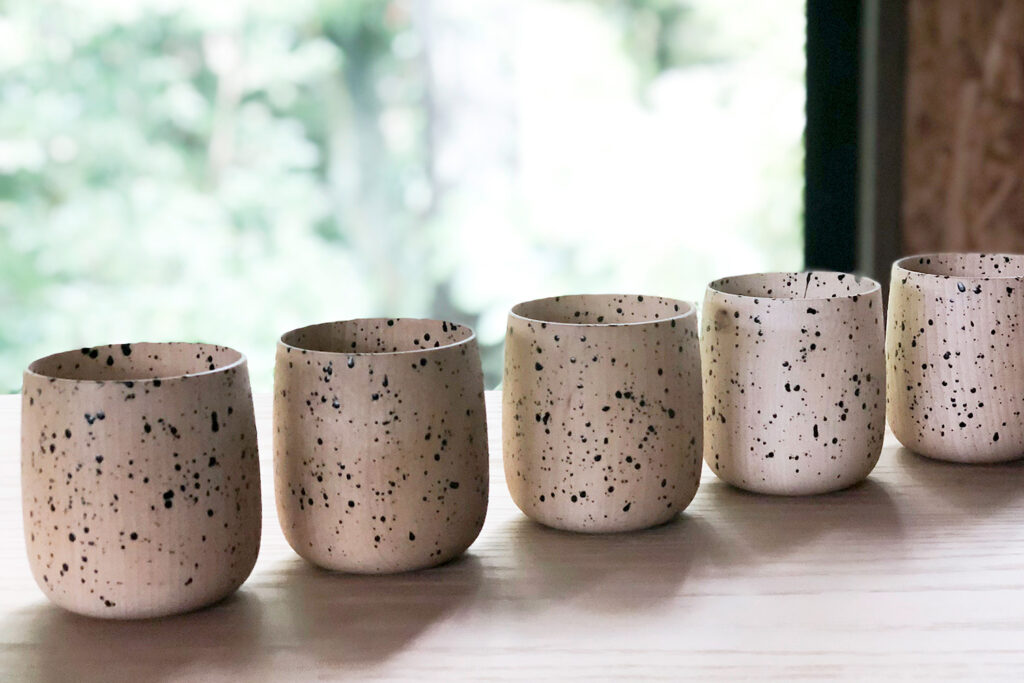
—— Natural shibuki, in particular, has a contemporary feel while retaining a traditional flavor.
The natural shibuki is spattered with lacquer by a craftsman, and it is to some extent a difficult technique to evenly distribute the splotches on the outside and inside. Here, too, the skill of Yamanaka’s craftsmen shines through.
—— The story of YUKI wood, which was born because of the skills of Yamanaka lacquerware craftsmen, is even more beautiful and powerful.
I had only introduced it with the minimum necessary expressions, but I realized again that YUKI wood is an item that really has a lot of background and stories and to tell…and I am very happy to be able to tell you about it. I would like everyone to know that it is an excellent product born from the “fearsome” skills of Yamanaka lacquerware craftsmen, in the best sense of the word. I would also like you to actually use it and feel its texture, thinness, lightness, and smoothness.
The final finish of YUKI wood is a coating of food grade urethane, so you can use it as an everyday item without being worried. It will surely be appreciated as a gift.
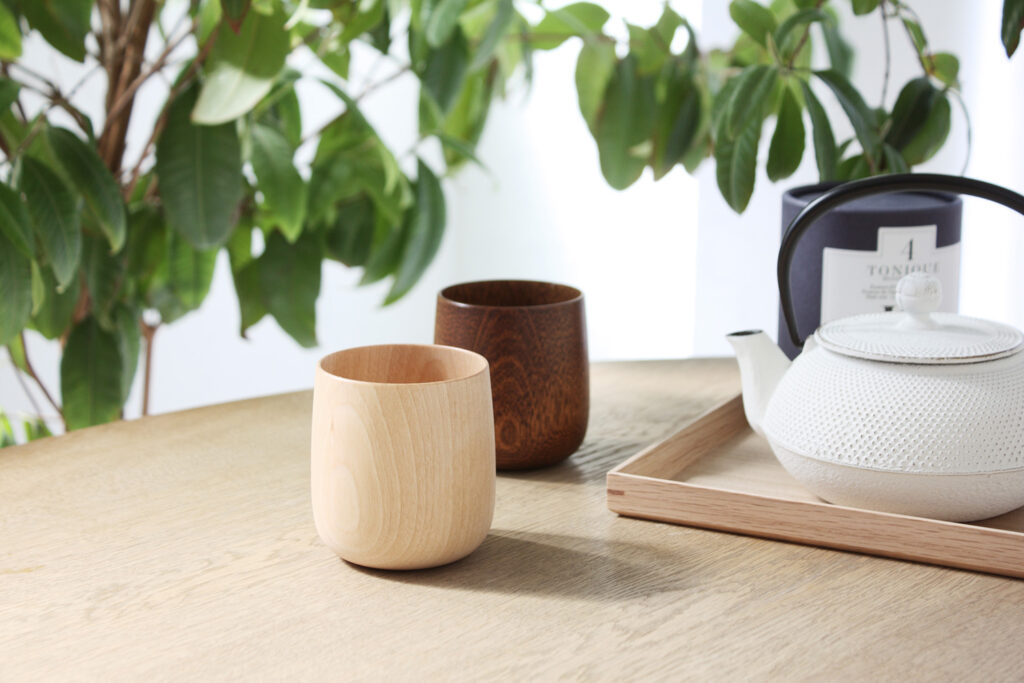
Item information
